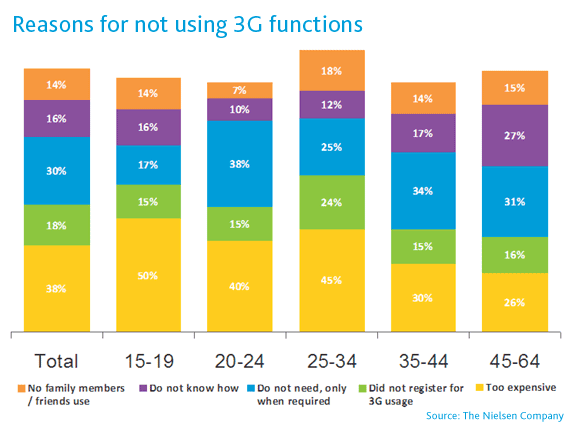The number of Malaysians accessing the Internet hit 41 percent in 2010, a 15 percent increase over the previous year, according to The Nielsen Company’s Mobile Insights Survey. The highest usage was recorded among people aged 20-24: almost six in ten (57%) regularly use the Internet, spending an average of 22.3 hours online per week. Once online, Malaysians primarily use social networking sites. Almost three-quarters (71%) are keeping in touch with friends and family via these sites, a 24 percent increase from 2009. Instant messaging and reading local news rounded out the top three online activities.
With mobile broadband becoming more widely available and affordable, it’s not surprising that a growing number of Malaysians are accessing the Internet via notebooks and smartphones. More than half of consumers (55%) are using laptops and netbooks while eleven percent said they are using smartphones – a nine point gain from 2009. Almost two in ten (19%) Malaysians aged 20-24 access the Internet via their mobile phones.
“Although mobile phones accounted for the smallest portion of the three devices, market share will increase due to the importance of three key consumer requirements: mobility, flexibility and accessibility anywhere and anytime,” said Luca Griseri, Director of Customized Research at The Nielsen Company.
The penetration of 3G phones is a key factor in the increasing use of phones to access the Internet. Almost half of Malaysians aged 20-34 own one. But almost half of these users do not use 3G functions, primarily due to cost. That should change, however, as service providers offer more competitive pricing schemes.

“The main trends started last year, such as the uptake of smartphones and the increasing usage of data will continue. At the same time, new trends, for example the success of tablet computers will further change the market and affect consumers’ expectations,” Griseri said. “Telecommunications players can position themselves to accommodate these changes by continuing to offer the latest products and services and focusing on the customer experience. They need to adopt a focused approach around users’ needs by identifying differences among user groups and offer solutions for them. Flexibility and simplicity are key success factors.”



